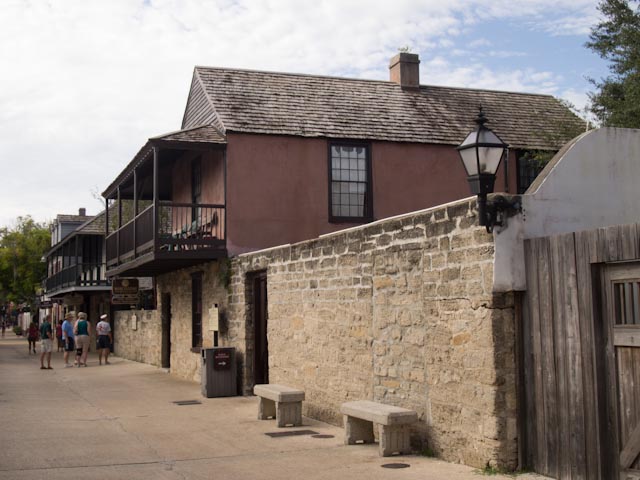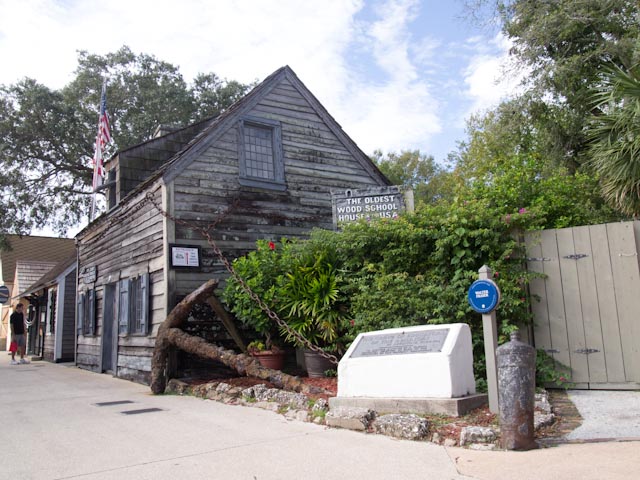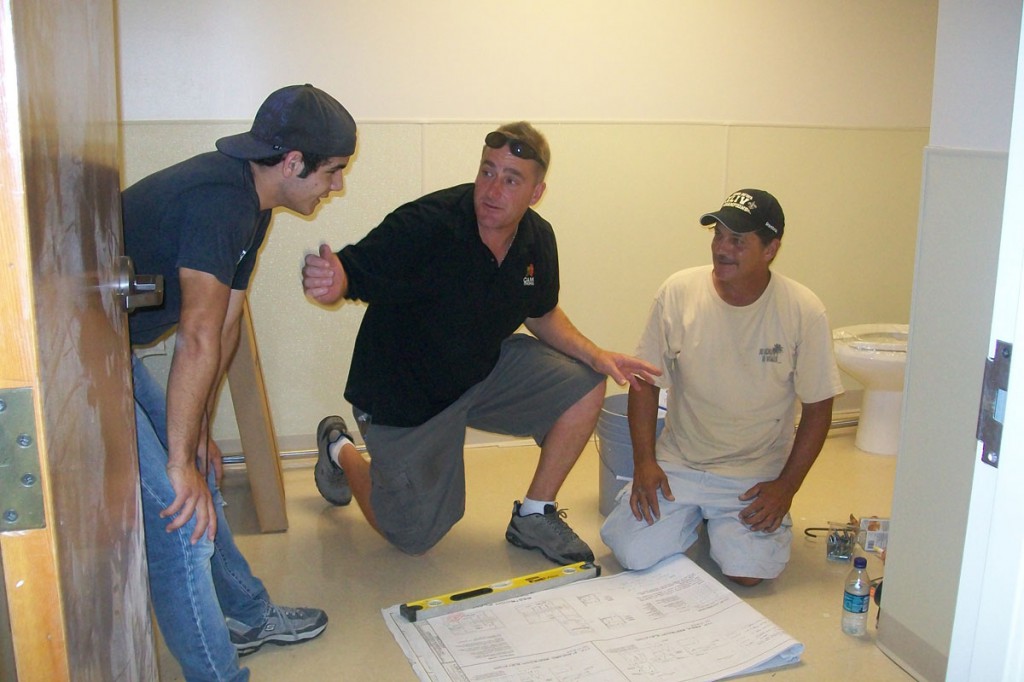
Historic preservation standards protect your community’s heritage and your building’s value
Our historic buildings are a national treasure that serves as a source of education, community pride, and economic development. Cities like St, Augustine, FL and Savannah, GA derive millions of dollars in revenue each year due to the historic buildings in their downtowns and enlightened historic preservation policies.
If you are fortunate enough to own a historic building you have a financial asset that must be maintained. To benefit from its history, a historic preservation designation is needed. Any construction work done to make the property functional in the modern age has to follow national and local standards and guidelines. Compliance will ensure you receive any tax incentives on offer.
For guidance, you need to rely on a team of professionals. It may include architects, architectural historians, historians, archeologists, general contractors, project managers, and others. These professionals specialize in the preservation, rehabilitation, and restoration of historic properties.
Today we will look at the standards and guidelines you must follow when rehabilitating your historic property. But first, let’s take a look at all the categories of historic preservation construction.
Types of historic preservation construction work
There are four approaches to construction work on historic buildings. They are defined by the U.S. Secretary of the Interior’s Standards for the Treatment of Historic Properties.
- Preservation: places a high premium on preserving the historic fabric of the building through conservation, maintenance, and repair. It looks to preserve the property over time, and through successive users, and any respectful changes or alterations that have to be made.
- Rehabilitation: emphasizes the retention and repair of historic materials, but more latitude is provided for replacement. It is assumed a building may be more in worse shape before work begins.
- Restoration: focuses on keeping materials from the most historically significant time in a property’s lifespan, while permitting the removal of materials from other periods.
- Reconstruction: establishes limited opportunities to re-create a non-surviving site, landscape, building, structure, or object with all new materials. 1
Definition of Standards for Rehabilitating Historic Buildings
The following information (grey text) comes from the U.S. Secretary of the Interior’s website with minimal editing. It is by necessity legalistic so put your concentration cap on. 😉
The Standards for Rehabilitation (codified in 36 CFR 67 for use in the Federal Historic Preservation Tax Incentives program) address the most prevalent rehabilitation treatments. “Rehabilitation” is defined as “the process of returning a property to a state of utility, through repair or alteration, which makes possible an efficient contemporary use while preserving those portions and features of the property which are significant to its historic, architectural, and cultural values.”
Initially developed to determine the appropriateness of proposed work on registered properties within the Historic Preservation Fund grant-in-aid program, the Standards for Rehabilitation have been widely used over the years–particularly to determine if a rehabilitation qualifies as a Certified Rehabilitation for Federal tax purposes.
Also, the Standards have guided Federal agencies in carrying out their historic preservation responsibilities for properties in Federal ownership or control; and State and local officials in reviewing both Federal and nonfederal rehabilitation proposals. They have also been adopted by historic district and planning commissions across the country.
The Standards pertain to historic buildings of all materials, construction types, sizes, and occupancy and encompass the exterior and interior of the buildings. They also encompass related landscape features and the building’s site and environment, as well as attached, adjacent, or related new construction. To be certified for Federal tax purposes, a rehabilitation project must be determined to be consistent with the historic character of the structure(s), and where applicable, the district in which it is located.
When at least some repair or alteration of the historic building will be needed to provide for an efficient contemporary use; the repairs and alterations must not damage or destroy materials, features or finishes that are important in defining the building’s historic character. The Standards take into consideration economic and technical feasibility.
The following apply to rehabilitation projects:
- A property will be used for its historic purpose or be placed in a new use that requires minimal change to the defining characteristics of the building and its site and environment.
- The historic character of a property will be retained and preserved. The removal of historic materials or alteration of features and spaces that characterize a property will be avoided.
- Each property will be recognized as a physical record of its time, place, and use. Changes that create a false sense of historical development, such as adding conjectural features or architectural elements from other buildings, will not be undertaken.
- Most properties change over time; those changes that have acquired historic significance in their own right will be retained and preserved.
- Distinctive features, finishes, and construction techniques or examples of craftsmanship that characterize a property will be preserved.
- Deteriorated historic features will be repaired rather than replaced. Where the severity of deterioration requires replacement of a distinctive feature, the new feature will match the old in design, color, texture, and other visual qualities and, where possible, materials. Replacement of missing features will be substantiated by documentary, physical, or pictorial evidence.
- Chemical or physical treatments, such as sandblasting, that cause damage to historic materials will not be used. The surface cleaning of structures, if appropriate, will be undertaken using the gentlest means possible.
- Significant archeological resources affected by a project will be protected and preserved. If such resources must be disturbed, mitigation measures will be undertaken.
- New additions, exterior alterations, or related new construction will not destroy historic materials that characterize the property. The new work will be differentiated from the old and will be compatible with the massing, size, scale, and architectural features to protect the historic integrity of the property and its environment.
- New additions and adjacent or related new construction will be undertaken in such a manner that if removed in the future, the essential form and integrity of the historic property and its environment would be unimpaired.

Guidelines for Rehabilitating Historic Buildings
The Guidelines for Rehabilitating Historic Buildings were developed in 1977. They help owners, developers, and Federal managers apply the Secretary of the Interior’s Standards for Rehabilitation during the project planning stage. They aim to provide general design and technical recommendations.
Unlike the Standards, the Guidelines are not codified as program requirements. Together with the Standards for Rehabilitation they provide a model process for owners, developers, and others to follow. They are not meant to give case-specific advice or address exceptions or rare instances. They are listed on the U.S. Secretary of the Interior’s website.
Case-by-case decision-making is best accomplished by seeking help from qualified historic preservation professionals in the planning stage of the project. Such professionals include architects, architectural historians, historians, archeologists, and others who are skilled in the preservation, rehabilitation, and restoration of the historic properties.
Approaches, treatments, and techniques that are consistent with the Secretary of the Interior’s “Standards for Rehabilitation” are listed in bold-face type under the “Recommended” section in each topic area. Any approaches, treatments, and techniques which could adversely affect a building’s historic character are listed in the “Not Recommended” section in each topic area.
To further guide the owner and developer in planning a successful rehabilitation project, those involved design issues dealing with new use requirements such as alterations and additions are highlighted at the end of each section to underscore the need for particular sensitivity in these areas.
The guidelines include recommendations for the following components and systems of a building:
- Masonry
- Wood
- Metals
- Roof
- Windows
- Entrances/Porches
- Storefronts
- Structural Systems
- Mechanical Systems
- Spaces/Features/Finishes
- Site
- Setting
- Energy
- New Additions
- Accessibility
- Health and Safety
Implementing the Recommendations of the Guidelines
When work starts on the historic building prioritize it as follows:
- Identify, Keep, and Preserve the form and detailing of those architectural materials and features that are important in defining the historic character.
- Protect and Maintain those materials and features.
- Repair them as needed with minimal intervention.
- Replace unsalvageable materials with recreations.
- Design for missing historic features (such as a fence or canopy).
- Alterations/Additions to Historic Buildings
- Energy Efficiency/Accessibility Considerations/Health and Safety Considerations
Alterations for new use may include providing extra parking space; cutting new entrances or windows on secondary elevations; inserting a new floor; installing an new mechanical system, or creating an atrium or light well.
Alteration may also include the selective removal of buildings or other features of the environment or building site that are intrusive and, thus, detract from the historic character.

The right team is critical
As you can see the rehabilitation of your historic building is an extensive and detailed undertaking. If done right, it is one that will benefit your community, country, and yourself.
The key to a successful outcome is having the right team of professionals working with you. Experienced architects, architectural historians, historians, archeologists, general contractors, project managers, and others make sure you stay within local laws and achieve the historic designation you desire. Their work results in your receiving the greatest financial benefits available.
Conclusion
The people that carry out the repairs and construction on your building are some of the most vital members of the team. They have to work well with other teammates to implement the historic preservation plan. They must have the experience, expertise, and attention to detail required for a successful historic building rehabilitation project. Commitment to clear communications and quality work are a must.
The key is to use a general contractor you can trust to make sure your project is completed as planned and error-free.
When it comes time to choose a historic preservation construction partner, choose CAM Contracting.